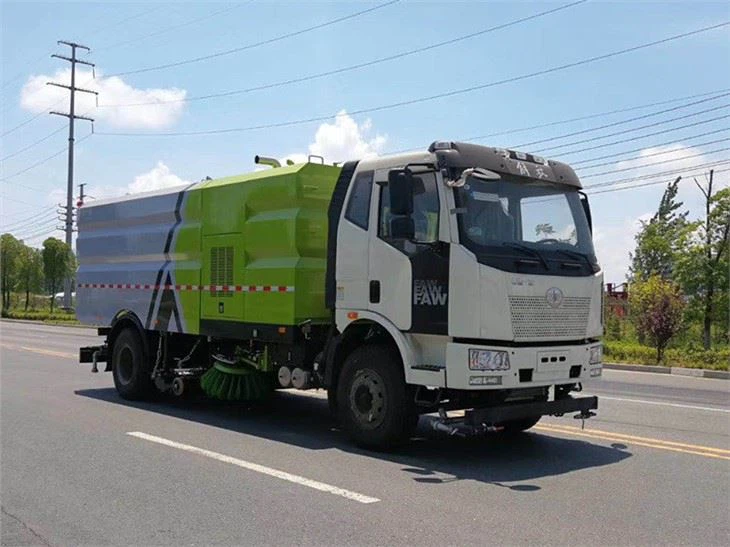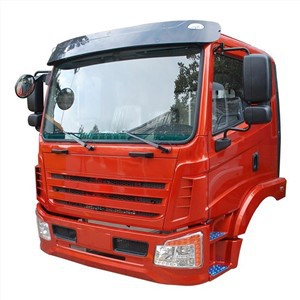Everything You Need to Know About Oil Trucks: A Comprehensive Guide

Introduction to Oil Trucks
Oil trucks are specialized vehicles designed for transporting various forms of oil, including crude oil and refined products. These trucks play a crucial role in the oil and gas industry by ensuring the reliable delivery of fuel to various distribution points. Understanding the intricacies of oil trucks can benefit both industry professionals and those simply looking to learn more about this essential aspect of transportation fuel logistics. This comprehensive guide dives deep into the world of oil trucks, exploring their functions, types, maintenance, regulations, and more.

The Importance of Oil Trucks in the Oil and Gas Industry
Oil trucks are vital for the efficient transport of oil, as they connect extraction sites to refineries, distribution points, and ultimately, consumers. Here are some reasons why oil trucks are so important:
- Reliable Transportation: Oil trucks ensure that oil products are shipped quickly and efficiently, meeting the high demand in various sectors.
- Safety Regulations: They adhere to safety standards that minimize the risk of leaks and accidents during transportation.
- Flexibility: Oil trucks can access remote locations that pipelines and railroads cannot, providing flexible solutions to logistics challenges.
Different Types of Oil Trucks
1. Tank Trucks
Tank trucks are perhaps the most common type, designed specifically to carry liquid cargo. They typically feature a cylindrical tank mounted on a truck chassis, accommodating the substantial volume of oil.
2. Vacuum Trucks
These trucks are equipped with a vacuum system for transporting liquids and sludges, often used for oil spills, waste oil removal, and environmental clean-ups.
3. Fuel Oil Trucks
Fuel oil trucks are specifically used to transport heating oil, diesel, and other refined oil products to distribution centers and directly to consumers.
4. Crude Oil Transport Trucks
These vehicles are specifically designed to transport crude oil from drilling sites to refineries or storage tanks, usually equipped with features to prevent spills.
Key Components of Oil Trucks
Oil trucks consist of various components that ensure their effective operation:

- Tank: The main compartment for storing oil, can be insulated for temperature control.
- Pump: Used for loading and unloading oil efficiently.
- Hoses: Flexible pipes used for transferring oil to and from the tank.
- Valves: Essential for controlling the flow of oil, preventing spills.
Operating Principles of Oil Trucks
Loading and Unloading Procedures
Efficient loading and unloading are vital for oil trucks. Here’s a step-by-step overview:
- Safety Checks: Before loading, operators perform safety checks, ensuring all equipment is functioning properly.
- Connection: Hoses are connected to both the oil source and the truck’s pump system.
- Transfer: The pump activates to begin transferring oil into the tank.
- Disconnection: Once loaded, hoses are disconnected carefully to avoid spills.
Transportation and Delivery
Once loaded, the oil truck embarks on its delivery journey. Attention to safety regulations during transport is critical. Oil trucks must follow specified routes and maintain speed limits to ensure safety on the roads.

Maintenance of Oil Trucks
Regular Check-Ups
Regular maintenance is key to preventing breakdowns and ensuring safety:
- Fluid Levels: Check and refill oil, brake fluid, and coolant levels regularly.
- Tire Maintenance: Regularly check tire pressure and tread depth to ensure safe traveling.
- Brake Checks: Regular inspections to ensure effective braking systems.
Cleaning and Inspections
Cleaning the tank and hoses after unloading oil is essential to prevent contamination and safety hazards. Additionally, periodic inspections by certified personnel help identify any weaknesses or potential failures in the system.
Regulations Governing Oil Trucks
The transportation of oil is heavily regulated to ensure safety and environmental protection. Key regulatory bodies include:
- Department of Transportation (DOT): Enforces regulations related to transportation safety.
- Environmental Protection Agency (EPA): Implements regulations to prevent pollution during transportation.
- Occupational Safety and Health Administration (OSHA): Sets guidelines to ensure worker safety during operations.
Challenges Faced by Oil Truck Operators
1. Environmental Regulations
Strict regulations often increase operational costs and complicate logistics planning.
2. Safety Risks
Operators face significant risks, including spills that can have devastating environmental impacts.
3. Infrastructure Issues
Poor road conditions, especially in remote areas, can hinder transportation efficiency and safety.
The Future of Oil Trucking
As the energy landscape evolves, oil trucks are adapting. The following trends are shaping the future:
- Technological Innovations: Advances in telemetry and real-time tracking improve logistics efficiency.
- Alternative Fuels: A pivot towards hybrid and electric trucks in some regions is beginning to take place.
- Increased Regulations: Future regulations may emphasize environmental sustainability and safety.
Top Tips for Oil Truck Operators
1. Emphasize Safety
Always prioritize safety for yourself and the environment. Regularly train staff on emergency protocols.
2. Maintain Your Vehicle
Regular maintenance not only extends the life of your vehicle but also ensures safety during transport.
3. Stay Informed on Regulations
Keep abreast of changing legal requirements to ensure compliance and avoid fines.
FAQs About Oil Trucks
1. What types of oil can be transported using oil trucks?
Oil trucks can transport crude oil, refined petroleum products, heating oil, and various lubricants.
2. How do oil trucks prevent spills during transportation?
Oil trucks are equipped with safety valves, leak detection systems, and secure loading and unloading procedures to minimize spills.
3. What measures are taken in case of an oil spill?
In case of a spill, operators must adhere to emergency response plans that often include notifying local authorities and activating clean-up services.
4. Are there specific licensing requirements for oil truck drivers?
Yes, drivers typically need a commercial driver’s license (CDL) with specialized endorsements for transporting hazardous materials.
5. What are the most common challenges faced in oil trucking?
The most common challenges include compliance with strict regulations, environmental concerns, and maintaining the safety of transportation routes.
6. How is technology changing the oil trucking industry?
Technology is improving logistics management through tracking software, enhancing safety protocols, and increasing efficiency in operations.
